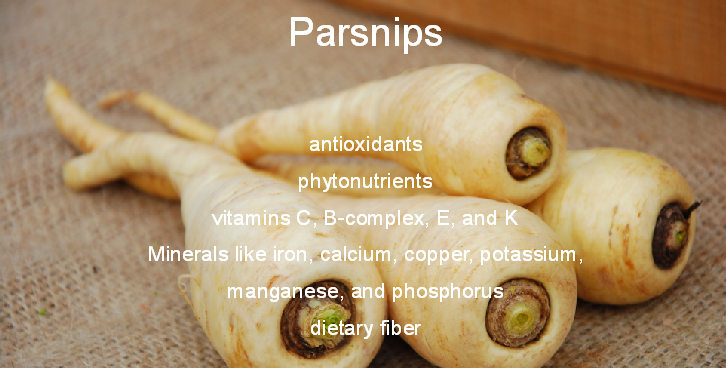
Know Your Produce: Parsnips
Parsnips are sweet, succulent underground taproots closely related to (surprise!) the carrot family of vegetables.
Store: parsnips in a plastic bag and place inside the vegetable drawer of the refrigerator set between 0°C and 5°C. Do not place raw parsnips in the freezer compartment.
Prep: to prepare, wash them in cold water and scrub or gently peel the skin. Trim off the ends. Cut into cubes, disc, and pieces as you desire.
Tender parsnips can be cooked in a similar way like carrots. Do not overcook; they cook early as they contain more sugar than starch.
Use: Raw parsnips add unique sweet taste to salads, coleslaw, and toppings. Grate or very thinly slice when using raw.
Parsnips can be cooked and mashed with potato, leeks, cauliflower, etc.
Slices and cubes added to stews, soups, and stir-fries and served with poultry, fish, and meat.
Used in breads, pies, casseroles, cakes, etc., in a variety of savory dishes.
Try them: sliced and roasted with coconut oil and sea salt. Once you remove from the oven, sprinkle with cinnamon and then drizzle some raw honey on top. Serve and enjoy!
| See the table below for in depth analysis of nutrients:Parsnips (Pastinaca sativa), Fresh, raw, Nutrition value per 100 g. (Source: USDA National Nutrient data base) |
| Principle | Nutrient Value | Percentage of RDA |
| Energy | 75 Kcal | 4% |
| Carbohydrates | 17.99 g | 14% |
| Protein | 1.20 g | 2% |
| Total Fat | 0.30 g | 1% |
| Cholesterol | 0 mg | 0% |
| Dietary Fiber | 4.9 g | 13% |
| Vitamins | ||
| Folates | 67 µg | 17% |
| Niacin | 0.700 mg | 4% |
| Pantothenic acid | 0.600 mg | 12% |
| Pyridoxine | 0.90 mg | 7% |
| Riboflavin | 0.050 mg | 4% |
| Thiamin | 0.090 mg | 7.5% |
| Vitamin A | 0 IU | 0% |
| Vitamin C | 17 mg | 29% |
| Vitamin K | 22.5 µg | 19% |
| Electrolytes | ||
| Sodium | 10 mg | <1% |
| Potassium | 375 mg | 8% |
| Minerals | ||
| Calcium | 36 mg | 3.5% |
| Copper | 0.120 mg | 13% |
| Iron | 0.59 mg | 7.5% |
| Magnesium | 29 mg | 7% |
| Manganese | 0.560 mg | 24% |
| Phosphorus | 71 mg | 10% |
| Selenium | 1.8 µg | 3% |
| Zinc | 0.59 mg | 5% |
| Phyto-nutrients | ||
| Carotene-α | 0 µg | — |
| Carotene-ß | 0 µg | — |
| Crypto-xanthin-ß | 0 µg | — |
| Lutein-zeaxanthin | 0 µg | — |
